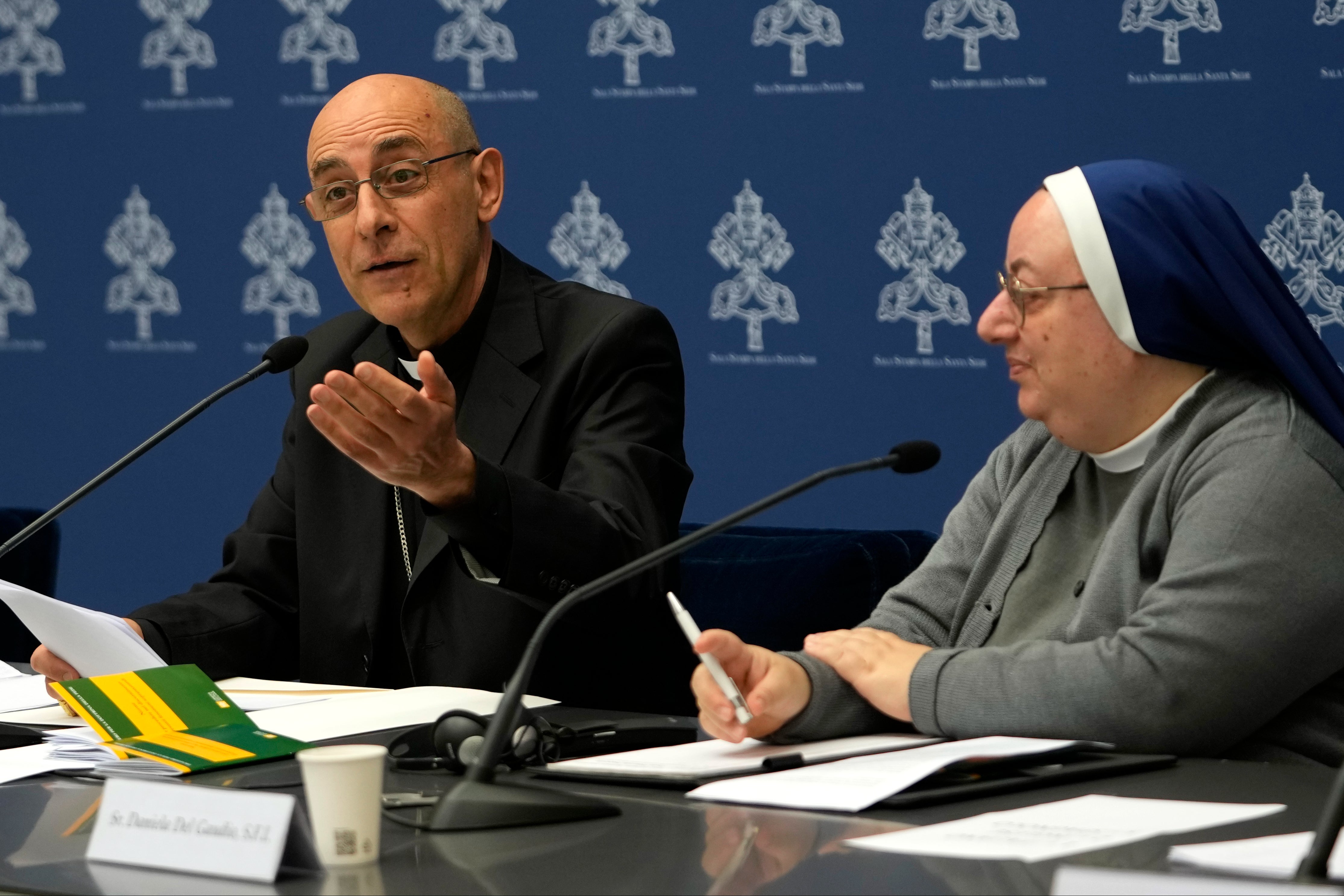Vatican radically reforms rules on supernatural events such as weeping statues to combat hoaxes
The Catholic Church has had a long and controversial history of the faithful claiming to have had visions of the Virgin Mary or of statues purportedly weeping tears of blood

Your support helps us to tell the story
From reproductive rights to climate change to Big Tech, The Independent is on the ground when the story is developing. Whether it's investigating the financials of Elon Musk's pro-Trump PAC or producing our latest documentary, 'The A Word', which shines a light on the American women fighting for reproductive rights, we know how important it is to parse out the facts from the messaging.
At such a critical moment in US history, we need reporters on the ground. Your donation allows us to keep sending journalists to speak to both sides of the story.
The Independent is trusted by Americans across the entire political spectrum. And unlike many other quality news outlets, we choose not to lock Americans out of our reporting and analysis with paywalls. We believe quality journalism should be available to everyone, paid for by those who can afford it.
Your support makes all the difference.The Vatican has radically reformed its rules for evaluating reported supernatural events such as weeping Madonnas and blood-dripping crucifixes that have for centuries whipped up the Catholic faithful.
Its doctrine office has overhauled procedures, first issued in 1978, arguing that they were no longer viable in the internet age. Nowadays, word about apparitions or weeping Madonnas travels quickly and can actually harm the faithful if hoaxers are trying to make money off people’s beliefs or manipulate them, the Vatican said.
The Catholic Church has had a long and controversial history of the faithful claiming to have had visions of the Virgin Mary, of statues purportedly weeping tears of blood and stigmata erupting on hands and feet mimicking the wounds of Christ.
Church figures who claimed to have experienced the stigmata wounds, including Padre Pio and Pope Francis’s namesake, St Francis of Assisi, have inspired millions of Catholics even if decisions about their authenticity have been elusive.
Francis himself has weighed in on the phenomenon, making clear that he is devoted to the main church-approved Marian apparitions, such as Our Lady of Guadalupe, who believers say appeared to an Indigenous man in Mexico in 1531.
But Francis has expressed skepticism about more recent events, including claims of repeated messages from Mary to “seers” at the shrine of Medjugorje in Bosnia-Herzegovina, even while allowing pilgrimages to take place there.
When confirmed as authentic by church authorities, these otherwise inexplicable signs have led to a flourishing of the faith, with new religious vocations and conversions. That has been the case for the purported apparitions of Mary that turned Fatima in Portugal, and Lourdes in France, into enormously popular pilgrimage destinations.

The revised norms acknowledge the real potential for such abuses and warn that hoaxers will be held accountable, including with canonical penalties.
That was the case when the Vatican in 2007 excommunicated the members of a Quebec-based group, the Army of Mary, after its foundress claimed to have had Marian visions and declared herself the reincarnation of the mother of Christ.
The new norms reframe the evaluation process by essentially taking off the table whether church authorities will declare a particular vision or event supernatural.
Instead, the new criteria envisages six main outcomes, with the most favorable being that the church issues a noncommittal doctrinal green light, a so-called “nihil obstat”. Such a declaration means there is nothing about the event that is contrary to the faith, and therefore Catholics can express devotion to it.
The bishop can take more cautious approaches if there are doctrinal red flags about the reported event. The most serious envisages a declaration that the event isn’t supernatural or that it needs a public statement “that adherence to this phenomenon is not allowed.”
At no point are the faithful obliged to believe in the particular events, said Argentine cardinal Vïctor Manuel Fernandez, the head of the Vatican doctrine office. “The church gives the faithful the freedom to pay attention” or not, he said at a news conference.
Despite the new criteria, he assured that the church’s past decision-making on alleged supernatural events – such as at Fatima, Guadalupe or Lourdes – remains valid.
“What was decided in the past has its value,” he said. “What was done, remains.”
To date, fewer than 20 apparitions have been approved by the Vatican, according to Michael O’Neill, who runs the online apparition resource The Miracle Hunter.
Associated Press
Join our commenting forum
Join thought-provoking conversations, follow other Independent readers and see their replies
Comments